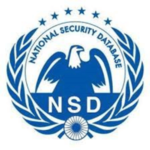Talk To Our Cyber Expert For Free.
Phishing Campaign





Phishing Campaign Services: Protecting Your Business from Digital Deception
The threat of Phishing Campaigns lurks around every digital corner, it continues to be a significant concern for businesses of all sizes. As the digital world becomes increasingly complex, organizations need to understand what phishing campaigns are, the different types they can encounter, and how to effectively protect themselves against these threats. This is where a phishing simulation service can play a crucial role, helping you fortify your defenses.

What is a Phishing Campaign?
A phishing Campaign is a malicious attempt to deceive individuals or organizations into revealing sensitive information, such as login credentials, credit card numbers, or other personal data, often through fraudulent emails, websites, or other communication channels. The goal of these campaigns is to exploit human vulnerabilities and trick victims into taking actions that benefit the attacker.
Phishing campaigns typically involve various tactics to manipulate their targets, including:
- Social Engineering : Exploiting human psychology to trick individuals into revealing confidential information.
- Impersonation : Pretending to be a legitimate entity, like a bank, a social media platform, or a colleague.
- Deceptive Websites : Creating convincing fake websites that closely resemble legitimate ones to capture user information.
- Malware : Embedding malicious software in email attachments or links that can compromise the victim’s device.
Types of Phishing Campaigns
Phishing campaigns come in various forms, each designed to exploit different vulnerabilities or weaknesses. Some common types of phishing campaigns include:
Email phishing is perhaps the most prevalent form of phishing. Attackers send deceptive emails that appear to be from a trusted source, prompting recipients to click on malicious links or download malicious attachments.
Spear phishing targets specific individuals or organizations, often leveraging personal information to craft convincing messages. Attackers research their victims to make the phishing attempts more believable.
Pharming involves directing users to fraudulent websites that mimic legitimate ones. Victims unknowingly enter their credentials, which the attacker then harvests
Vishing is the telephone equivalent of phishing. Attackers call individuals and use social engineering techniques to extract sensitive information over the phone.
Smishing is similar to email phishing but occurs through SMS or text messages. Victims receive a text with a link that, when clicked, can lead to malware installation or data theft.
Whaling focuses on high-profile targets, such as CEOs or top-level executives. Attackers craft sophisticated phishing emails designed to trick these individuals into taking specific actions.
In clone phishing, attackers create a duplicate copy of a legitimate email, making slight modifications. Recipients may be fooled into thinking the email is genuine and follow the attacker’s instructions.
Phishing Simulation Service
As the saying goes, “ The best defense is a good offense”. A phishing Simulation Service is a proactive approach to safeguarding your organization against phishing campaigns. It involves the creation of controlled, simulated phishing attacks to test the awareness and responsiveness of your employees
Here are some key benefits of using the Phishing Simulation service
- Employee Awareness Training : Phishing simulation services help educate your employees about the dangers of phishing attacks. By experiencing simulated phishing attempts, employees become more vigilant and learn to recognize potential threats.
- Realistic Testing : Simulated attacks closely mimic real-world phishing campaigns. This enables organizations to assess how well their employees can spot and respond to phishing attempts, providing valuable insights into areas that need improvement.
- Customized Training : Phishing Simulation Services can be customized to your organization’s specific needs. You can target different departments, create varied scenarios, and track progress to ensure your employees receive relevant and effective training.
- Data-Driven Insights : Phishing simulation services provide detailed reports on user interactions with simulated phishing emails. This data helps organizations understand their vulnerabilities and make data-driven decisions to strengthen their security measures.
- Security Culture Building : By regularly conducting phishing simulations, organizations foster a security-conscious culture within the workplace. This ongoing practice encourages employees to stay vigilant against evolving threats.
- Compliance Requirements : Many industries and regulatory bodies require organizations to conduct regular security awareness training. Phishing simulation services assist in meeting compliance obligations while enhancing security.
METHODOLOGY
Recognizing Phishing Attempts
- 01. Suspicious Email Requests
- 02. Email Sender's Address
- 03. Poorly Written Messages
- 04. Urgency and Fear Tactics
- 05. Suspicious Links and Attachments
- 06. Employee Awareness and Training
- 07. Implement Email Filters and Security Solutions
- 08. Multi-Factor Authentication (MFA)
- 09. Regular Software Updates
- 10. Strong Password Practices
- 11. Incident Response Plan
Be cautious of emails asking for personal or financial information, urgent actions, or threatening consequences if you don’t comply.
Pay attention to the email sender’s address and verify its authenticity. Watch for slight variations or misspellings that may indicate a fraudulent sender.
Phishing emails often contain grammatical errors, spelling mistakes, or awkward language usage.
Phishing emails may create a sense of urgency or fear to prompt immediate action, such as threats of account closure or legal consequences.
Avoid clicking on suspicious links or downloading attachments from unknown or untrusted sources.
Conduct regular training sessions to educate employees about phishing techniques, raising awareness of common tactics and how to identify and report suspicious emails.
Utilize email filters and advanced security solutions that can detect and block phishing attempts before they reach users’ inboxes.
Enable MFA for all user accounts to add an extra layer of security, requiring additional verification beyond passwords.
Keep all software, including operating systems, web browsers, and security applications, up to date with the latest security patches and fixes.
Encourage employees to use strong, unique passwords and regularly change them. Consider implementing a password management system.
Develop an incident response plan to efficiently handle and mitigate any successful phishing attacks. This includes steps for containment, investigation, and recovery.
Benefits

Proactive Risk Mitigation

Incident Readiness and Response

Enhanced Security Awareness
Get a quote now
Expertise
Our Security Qualifications
Our team of ethical hackers and penetration testing service experts possess the skills and experience to identify the latest threats.










How Qunit Can Help You in Phishing Attacks
Qunit Technologies offers an advanced Phishing Simulation Service that stands out in the market, because of our effectiveness and comprehensiveness.
Here are some ways Qunit Technologies can aid your organization in defending against phishing attacks:
- Mitigate Risk : By Identifying vulnerabilities and weaknesses in your organization through simulation, you can take proactive measures to mitigate risks. This includes improving security policies, enhancing employee awareness, and implementing advanced email filtering and security solutions.
- Create a Security Aware Culture : Our service helps to create a security-aware culture within your organization. When employees understand the tactics used in phishing campaigns, they become more vigilant and better equipped to recognize and report suspicious activity.
- Customizable Campaigns : Qunit Technologies provides the flexibility to customize phishing simulation campaigns according to your organization’s unique requirements. Will create scenarios that closely resemble real-world threats to test your employees’ preparedness.
- Reduce Security Incidents : With better-trained employees, the likelihood of falling victim to phishing attacks decreases significantly. This results in fewer security incidents, data breaches, and financial losses for your organization.
- Legal and Regulatory Compliance : Many industries have stringent regulations related to data security and privacy. By taking proactive steps to protect against phishing attacks, your organization Can better adhere to these requirements and avoid potential legal repercussions.
- Protect Your Reputation : Falling victim to a phishing campaign can not only result in financial losses but also damage your organization’s reputation. Customers and partners expect their data to be handled securely, and a breach can break the trust. You can safeguard your reputation by choosing our service.
- Detailed Reporting : Qunit Technologies generates comprehensive reports on the results of your phishing simulations. You got valuable insights into user behavior, allowing you to identify areas for improvement and take targeted actions to enhance security.
- Training and Awareness : We offer training sessions to educate your employees about phishing risks and best practices for staying safe online. This integrated approach helps build a security-conscious workforce.
Get a quick quote
Frequently Asked Questions (FAQ) - Phishing Campaign
A phishing campaign is a targeted attempt to trick individuals into sharing sensitive information by posing as a trustworthy entity, such as a reputable organization or service provider.
Look out for suspicious email requests, check the email sender’s address for authenticity, and be wary of poorly written messages, urgent or threatening language, and suspicious links or attachments.
Implement employee awareness training, email filters, multi-factor authentication, regular software updates, strong password practices, and develop an incident response plan.
Report any suspected phishing attempts to your IT or security team using the designated reporting channels. Timely reporting is essential for swift action and mitigating risks.
